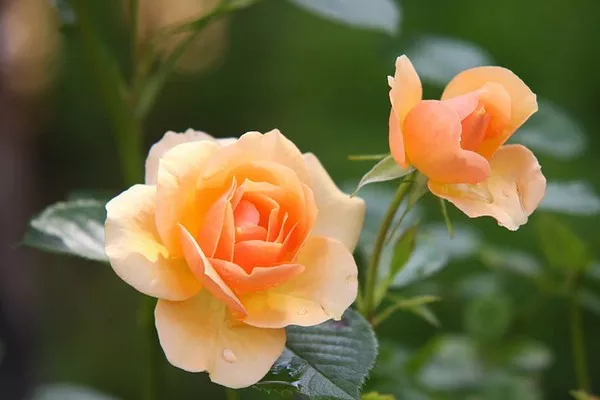As February unfolds, nature begins to stir from its winter slumber, offering a glimpse of the approaching spring. Symbolism often intertwines with nature, and flowers have long been emblematic of various meanings and sentiments. In the case of February, two flowers take center stage – the Violet and the Primrose. These delicate blossoms not only add a burst of color to the winter landscape but also carry profound symbolism, rooted in history, mythology, and cultural significance.
Violet: A Timeless Emblem of Modesty and Faithfulness
The Violet, with its dainty petals and subtle fragrance, stands as a timeless symbol associated with February. This small yet resilient flower has a rich history that extends back through the centuries. One of its most prominent symbolic meanings is modesty, a virtue that has been revered across cultures and eras.
In ancient Greek mythology, the Violet was linked to the story of Io, a mortal woman loved by Zeus. To protect Io from the jealous gaze of Hera, Zeus transformed her into a heifer. As Io grazed in a field of violets, these delicate flowers became a symbol of her modesty and virtue. The Romans also held the Violet in high regard, associating it with Venus, the goddess of love. The flower’s delicate beauty was thought to represent the goddess’s affections and the virtues of love.
Throughout the Victorian era, the language of flowers gained popularity as a means of expressing sentiments that were often left unspoken. In the language of flowers, or floriography, the Violet became a symbol of faithfulness, humility, and virtue. Giving Violets to a loved one conveyed a message of enduring love and loyalty.
In Christianity, the Violet is often associated with the Virgin Mary. The flower’s modest appearance is seen as a reflection of Mary’s humility and purity. During the Middle Ages, artists frequently depicted the Virgin Mary with Violets in religious paintings, emphasizing the flower’s connection to divine virtues.
Primrose: An Early Bloomer Signifying Youthful Love and Hope
The Primrose, another symbolic flower of February, is a herald of spring with its vibrant hues and delicate appearance. As one of the first flowers to bloom, the Primrose has been historically associated with youth, renewal, and the promise of warmer days ahead.
In ancient Roman tradition, the Primrose was dedicated to Flora, the goddess of flowers and spring. The Romans celebrated the arrival of spring with elaborate festivals, and the Primrose became an emblem of the season’s renewal and the youthful exuberance it brought.
In medieval Europe, the Primrose continued to be a harbinger of hope and rebirth. Its appearance in the early months of the year was a sign that winter’s grasp was loosening, and the world was awakening from its cold slumber. This association with hope and new beginnings made the Primrose a popular choice for gardens and festivities.
The language of flowers during the Victorian era also ascribed specific meanings to the Primrose. This charming blossom came to symbolize young love, making it a favored gift between couples. Giving Primroses to a romantic interest conveyed feelings of admiration, affection, and the anticipation of a blossoming relationship.
Cultural Significance and Contemporary Relevance:
Both the Violet and the Primrose continue to hold cultural significance and find their places in contemporary celebrations and traditions.
In modern times, the Violet is often associated with sentiments of remembrance and sympathy. Its delicate blooms are used to convey condolences and express the idea that memories, like the enduring nature of the Violet, will persist beyond the moment of loss.
Similarly, the Primrose is a popular choice for spring weddings and celebrations. Its vibrant colors and association with new beginnings make it an ideal flower for couples embarking on the journey of marriage. Additionally, the Primrose’s early bloom makes it a symbol of resilience and the triumph of life over the challenges of winter.
See Also Choosing the Perfect Flower Color for a 70th Birthday Celebration
Conclusion:
As we delve into the symbolic significance of the Violet and the Primrose, it becomes clear that these flowers are not mere botanical wonders but carriers of profound meanings. February, with its lingering winter chill, is brightened by the presence of these blossoms, each weaving a narrative of virtues, love, and hope.
Whether exchanged in bouquets, incorporated into art, or planted in gardens, the Violet and the Primrose continue to captivate hearts and minds, connecting us to the rich tapestry of history, mythology, and cultural traditions. So, as February unfolds, let us embrace the symbolic beauty of these flowers, acknowledging the enduring virtues they represent and the promise they hold for the months to come.


